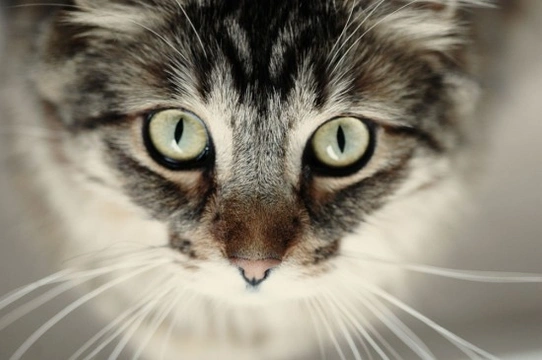
All about glaucoma in cats
Glaucoma is the term used to refer to a disease of the optic nerve, and is a condition that can occur in people and cats, as well as some other animals. Glaucoma is a chronic (or long term) condition that places pressure on the optic nerve, that can eventually cause permanent damage to the eyes, and even lead to blindness. As with all chronic health conditions, early diagnosis and treatment is vital in order to give your cat the best chances of retaining their vision and quality of life, and knowing the signs and symptoms of glaucoma in cats can help you to do this.Read on to learn more about glaucoma in cats.
What is glaucoma?
Glaucoma is a chronic condition caused by a combination of high pressure within the eye and a failure of the normal drainage of fluid build up from the tear ducts. Glaucoma falls under two main categories: primary glaucoma and secondary glaucoma. Primary glaucoma is the term for the sudden onset of the condition, while secondary glaucoma refers to the more progressive long term version of the disease and the secondary infections and contra-indications that can occur alongside of it.
How does glaucoma occur?
Poor development of the eye’s filtering lenses, slipping (or luxation) of the lens of the eye, eye tumours, inflammation of the tissue around the eye, and blood build up in the front of the eye can all lead to glaucoma. If the normal flow and drainage of fluid from the eye is impaired due to high pressure within the eye caused by any of these underlying problems, then the pressure builds up within the eye and the normal drainage of fluid from the tear ducts is impaired, causing glaucoma.
Symptoms of glaucoma
- Excessive blinking
- The eyeball appears to recede into the socket
- High pressure within the eye, leading to a slight bulging appearance
- Overly red blood vessels within the eye
- A cloudy appearance in the eye that is often confused with cataracts
- Dilated or unresponsive pupils
- Loss of vision
Additionally, if secondary glaucoma is present, the following signs and symptoms may also be visible:
- Constricted pupils
- Visible spots of debris present within the eye
- The edge of the iris sticking to the cornea or lens of the eye
- Loss of appetite
- Lethargy or lack of interest in things that the cat previously enjoyed
- Head pressing behaviour, due to your cat trying to alleviate the pressure in the eyes
Definitive diagnosis of glaucoma in cats
If you suspect that your cat is developing glaucoma, fast veterinary intervention is vital. Your vet will examine your cat and test the pressure within the eye using a special tool called a ‘tonometer’ as well as considering your cat’s medical history, symptoms, and any possible causes for the problem such as unseen or minor injuries.Your vet may also need to refer your cat to a specialist ophthalmic veterinary surgeon for a detailed evaluation of the eyes and evaluation of the progression of the condition and how it is affecting your cat in terms of pain caused or the obstruction of their everyday lives.
Treatment and prognosis
The primary aims of treating glaucoma are to save the cats vision, and manage the pain caused by the condition. Your vet may consider a range of different treatment protocols, which usually includes medications to lower the pressure in the eyes and reduce pain.Generally, once one eye becomes affected by glaucoma, the second eye will begin to develop the condition also, so a large part of the treatment and management of glaucoma involves working to prevent damage to and preserve the function of the healthy eye.Surgery may sometimes be indicated in glaucoma also, depending on the exact nature and progression of the condition. The fluid around the eyes causing the pressure build up may be drained, and a process called cyclocryotherapy used to freeze and kill the cells that produce the fluid leading to the excessive pressure build up.When caught and treated early, the prognosis for the ongoing management of glaucoma in cats is generally fairly good. However if glaucoma is not identified and diagnosed until the condition is very advanced, there may be little that can be done to salvage your cat’s vision and reduce the associated pain of the condition, and surgical removal of the eye may be the best option. This serves to remove the source of the pain, and is generally manageable when one healthy eye remains, as your cat will, in time, adjust to seeing with only one eye. This is particularly true as your cat will likely have been losing the vision in the eye over a long period of time due to the condition itself, and so the eventual full loss of vision in one eye is likely to have a minimal impact upon your cat. After removal of an eye, the socket will then normally be surgically sutured closed.
The ultimate viability of your cat being able to live with glaucoma and maintain a good standard of life with the minimum of pain or inconvenience very much depends on the early diagnosis and treatment of the condition. If you suspect your cat is having problems with his vision or is showing any of the symptoms of glaucoma, don’t hang around- take them to the vet sooner rather than later to give them the best possible chances of maintaining a good quality of life.



